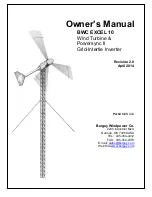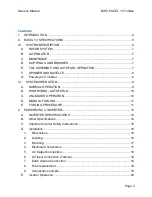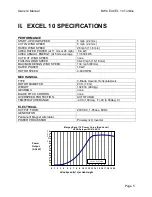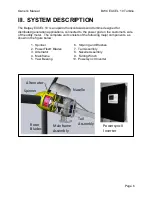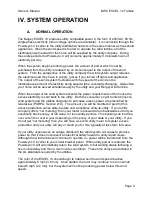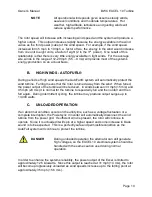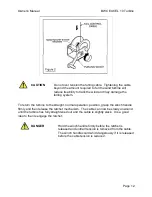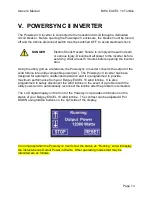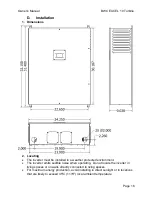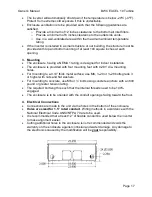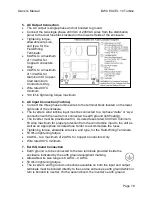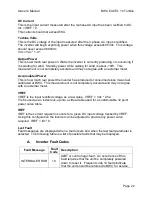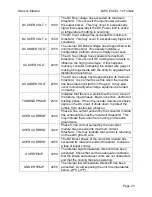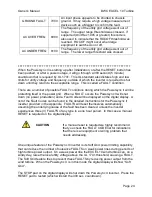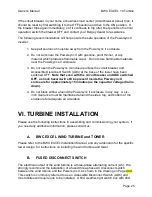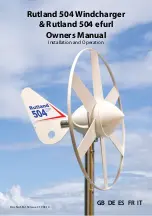
Owner’s Manual
BWC EXCEL 10 Turbine
Page 10
NOTE
All operational wind speeds given assume steady winds,
sea-level conditions and moderate temperatures. Hot
weather, high altitude, turbulence and gusting winds will
reduce system performance.
The rotor speed will increase with increasing wind speed and the system will produce a
higher output. This output increases rapidly because the energy available in the wind
varies as the third power (cube) of the wind speed. For example, if the wind speed
increased form 5 mph to 10 mph, a factor of two, the energy in the wind would increase
from one unit to eight units, a factor of eight (2 to the 3
rd
power). One result of this
relationship is that there is very little energy available in light winds. For the average
site, winds in the range of 12-20 mph (5.5
– 9 m/s) will provide most of the system’s
energy production on an annual basis.
B.
HIGH WINDS - AUTOFURL®
During periods of high wind speeds the AutoFurl® system will automatically protect the
wind turbine. Furling means that the rotor is turned away from the wind. When furled,
the power output of the turbine will be reduced. In winds between 33 mph (15 m/s) and
45 mph (20 m/s) it is normal for the turbine to repeatedly furl and then unfurl and then
furl again. During intermittent cycling the turbine may produce output surges up to
13,000 watts.
C.
UNLOADED OPERATION
If an abnormal condition occurs on the utility line, such as a voltage fluctuation or a
complete interruption, the Powersync II inverter will automatically disconnect the wind
turbine from the power grid. If sufficient wind is present, the rotor will continue to
operate. Since it is unloaded it will spin at a higher speed and some increase in blade
sound is to be expected. This is a perfectly safe and permissible condition as the
AutoFurl system will continue to protect the turbine.
DANGER
During unloaded operation the alternator can still generate
high voltages, so the EXCEL 10 electrical system should be
handled with the same caution used during normal
operation.
In order to enhance the systems reliability, the power output of the Excel is limited to
approximately 12.5 kilowatts. Since this output is reached at 31 mph (14 m/s), the rotor
will become progressively unloaded as wind speeds increase up to the furling point at
approximately 35 mph (15.6 m/s).

